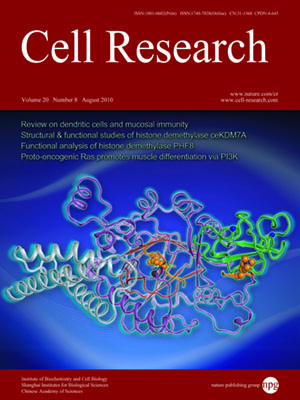
Volume 20, No 8, Aug 2010
ISSN: 1001-0602
EISSN: 1748-7838 2018
impact factor 17.848*
(Clarivate Analytics, 2019)
Volume 20 Issue 8, August 2010: 872-885
REVIEWS
Enemy at the gates: dendritic cells and immunity to mucosal pathogens
Adam C Soloff1,2 and Simon M Barratt-Boyes1,2,3
1Center for Vaccine Research, University of Pittsburgh, Pittsburgh, Pennsylvania 15261, USA
2Department of Infectious Diseases and Microbiology, University of Pittsburgh, Pittsburgh, Pennsylvania 15261, USA
3Department of Immunology, University of Pittsburgh, Pittsburgh, Pennsylvania 15261, USA
Correspondence: Simon M Barratt-Boyes,(smbb@pitt.edu)
Dendritic cells (DC) are diverse and specialized hematopoietic cells serving as an essential bridge between innate and adaptive immunity. DC exist in all lymphoid and nonlymphoid organs and are amongst the first responders to infection at epithelial surfaces including mucosal tissues. DC of the lung, gut, and vaginal mucosa display different phenotypes and functions reflecting each unique tissue and, in contrast to their counterparts in spleen and lymph nodes, are constantly exposed to both harmful and benign factors of their environments. Mucosal DC recognize and respond to pathogens through engagement of pattern recognition receptors, and activated DC migrate to draining lymph nodes to induce adaptive immune responses. The specialized function of DC aids in the induction of immunity and pathogen control at the mucosa. Such specialization includes the potent antiviral interferon response of plasmacytoid DC to viral nucleic acids, the ability of mucosal DC to capture organisms in the gut lumen, the capacity of DC to cross-present antigen from other infected cells, and the ability of mucosal DC to initiate IgA class switching in B cells. DC plasticity is also critical in the immune response to mucosal pathogens, as DC can respond to the microenvironment and sense pathogen-induced stress in neighboring epithelial cells. Finally, DC interact with each other through crosstalk to promote antigen presentation and T-cell immunity. Together, these processes condition mucosal DC for the induction of a tailored immune response to pathogens.
Cell Research (2010) 20:872-885. doi: 10.1038/cr.2010.94; published online 6 July 2010
FULL TEXT | PDF
Browse 2054


